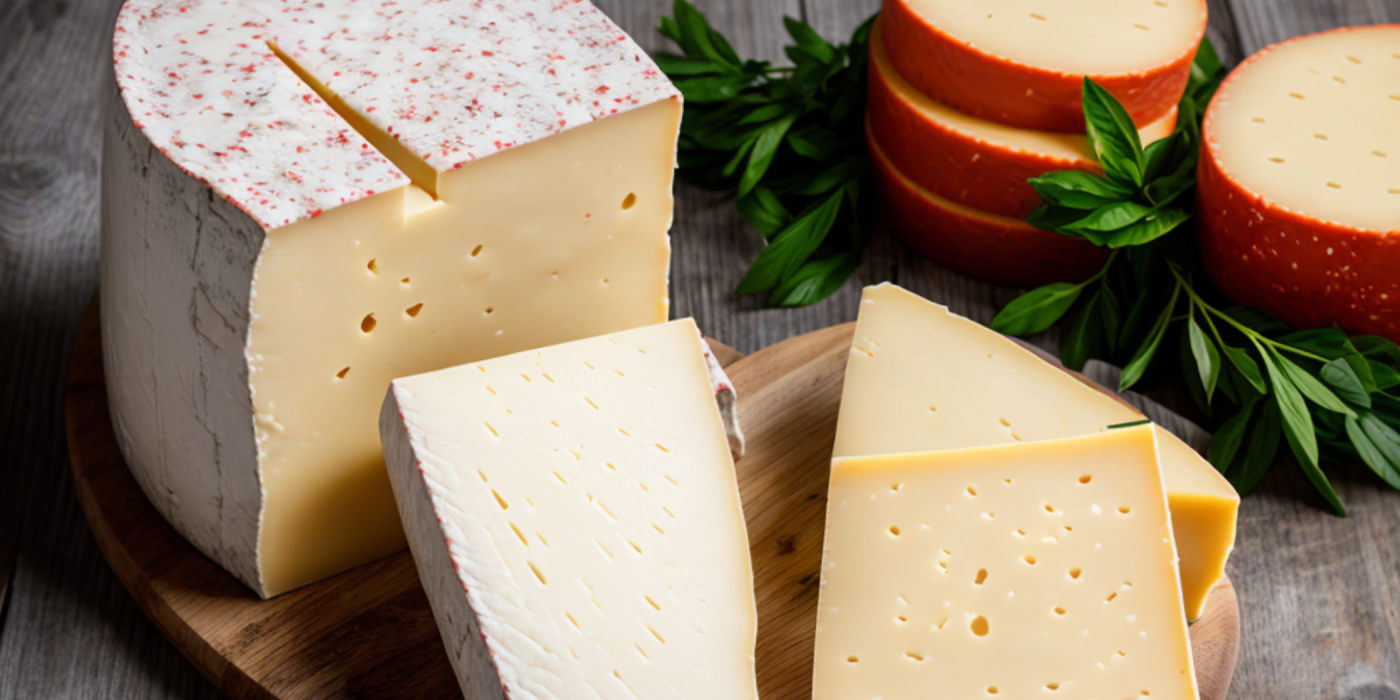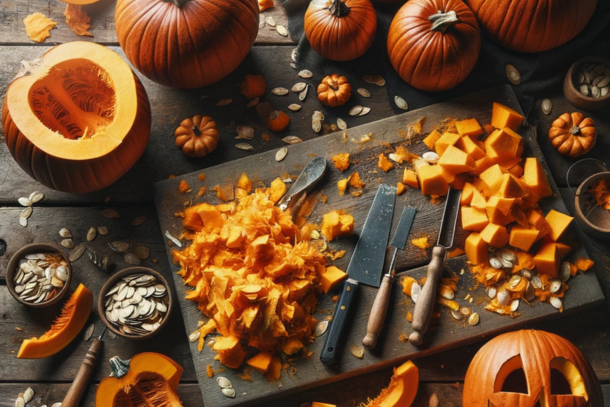Raw Cheese: Your Guide to Nutritional Benefits, Making it at Home, and More

In the culinary world, few food items offer as much versatility and rich flavour profiles as cheese. As a staple in countless cuisines across the globe, cheese is adored for its creamy textures, variety, and delightful contrasts in taste. However, in recent years, a specific type of cheese, known as raw cheese, has caught the attention of gourmands and health enthusiasts alike.
Understanding Raw Cheese
Defining Raw Cheese
Raw cheese, often also referred to as unpasteurised cheese, is crafted from milk that has not undergone the process of pasteurisation. This is a process where the milk is heated to a specific temperature to kill harmful bacteria. In the case of raw cheese, the milk retains its original, unadulterated state, leading to a product that many believe to be richer in both flavour and nutrients.
The Rise of Raw Cheese
The interest in raw cheese has been spurred by the global trend towards natural, unprocessed foods. People are increasingly searching for authentic tastes and nutritionally dense food options. Raw cheese ticks both these boxes, and its popularity has seen a noticeable upsurge in the UK and beyond.
The Importance of Understanding Raw Cheese
Nutritional Benefits
Raw cheese is not just a gourmet delight; it is also a storehouse of vital nutrients, vitamins, and minerals, leading to numerous health benefits. Delving into its nutritional composition and understanding the health advantages of raw cheese consumption can empower individuals to make informed dietary decisions.
The Joy of Homemade Raw Cheese
Perhaps one of the most rewarding aspects of exploring raw cheese is the possibility of making it at home. Crafting your own raw cheese allows for customisation to individual tastes, and provides a wholesome, DIY alternative to store-bought varieties. By the end of this article, you will have gained insights into raw cheese, its health benefits, and a homemade recipe to try out yourself. So, let's embark on this raw cheese journey together.
What is Raw Cheese?
Raw cheese is a product derived from milk that has not undergone the process of pasteurisation. Unlike most supermarket cheeses, which are made from pasteurised milk, raw cheese is crafted using unpasteurised milk, keeping all the naturally occurring bacteria intact. This unique feature lends raw cheese a robust and complex flavour profile that is treasured by cheese connoisseurs.
The Process of Making Raw Cheese
The journey from milk to cheese begins with fresh, unpasteurised milk. This milk is then warmed gently and combined with a starter culture and rennet, a substance that coagulates the milk, leading to the formation of curds. These curds are then cut, drained, and salted to form cheese. The cheese is aged for varying periods, depending on the desired flavour intensity and texture. It's important to note that making raw cheese requires stringent hygiene standards to ensure the end product is safe to eat.
Raw Cheese Varieties in the UK
In the UK, the production of raw cheese is a cherished tradition, with numerous types available for the discerning palate. Some popular varieties include:
Cheddar:
This classic British cheese needs no introduction. The raw version of cheddar is aged for a minimum of 60 days and boasts a sharp, full-bodied flavour.
Stilton:
Known as the king of cheeses, raw Stilton is made with unpasteurised cow's milk, showcasing a rich and complex flavour.
Brie de Meaux:
Although originally French, this cheese is also made by some UK artisans. The raw Brie de Meaux offers a creamy, slightly fruity taste, a real treat for the taste buds.
In conclusion, raw cheese is not just about great taste. It's also about preserving ancient cheese-making techniques and respecting the rich biodiversity that unpasteurised milk provides.
Nutrients, Vitamins and Minerals in Raw Cheese
In our quest for healthy, wholesome food, raw cheese holds a prime spot. Let's delve into the detailed breakdown of the nutritional content of this scrumptious dairy delight, and understand why it's an excellent addition to your diet.
Detailed Nutrient Breakdown
Raw cheese, made from unpasteurised milk, is brimming with beneficial nutrients. These include high-quality protein, essential fatty acids, and a myriad of vitamins and minerals. A 100-gram serving typically contains about 25 grams of protein, essential for muscle growth and repair. Vitamins in raw cheese include Vitamin A, several B vitamins like B2 (riboflavin) and B12, and Vitamin K2, which is often difficult to obtain from other dietary sources. As for minerals, it's a rich source of Calcium, crucial for bone health, along with Zinc, Selenium, and Phosphorus.
Health Benefits of Nutrients in Raw Cheese
The nutrients in raw cheese offer a wealth of health benefits. For instance, Vitamin A plays a crucial role in maintaining healthy vision and immune function. B Vitamins aid in energy production, while Vitamin K2 works in tandem with Calcium to support bone and cardiovascular health. The rich mineral content boosts various physiological processes, with Selenium acting as an antioxidant, and Phosphorus aiding in the formation of DNA and RNA.
Raw Cheese versus Regular Cheese
While regular cheese also provides protein, vitamins, and minerals, raw cheese stands out due to its unpasteurised nature. Pasteurisation often degrades some vitamins and kills beneficial bacteria (probiotics) present in raw cheese. Thus, when you opt for raw cheese, you're choosing a product that retains the full spectrum of its original nutrients, alongside beneficial gut-friendly bacteria, promoting a healthier digestion and a more robust immune response.
The Health Benefits of Raw Cheese
Raw cheese, often lauded as a treasure trove of essential nutrients, offers a plethora of health benefits that extend far beyond its rich, creamy flavour.
General Health Benefits of Consuming Raw Cheese
Raw cheese is an excellent source of high-quality protein, and being loaded with essential vitamins and minerals such as calcium, vitamin B12, and selenium, it can significantly contribute to a balanced diet. Consuming raw cheese can aid in maintaining bone health, enhancing immunity, and even supporting heart health.
Scientific Studies Supporting these Benefits
Numerous scientific studies underpin the health benefits of raw cheese. For example, research published in the British Journal of Nutrition reported that people who consumed cheese had a lower risk of osteoporosis and cardiovascular diseases. Furthermore, a study in the European Journal of Nutrition revealed that consumption of cheese can help in reducing the risk of obesity due to its high protein and calcium content.
The Recommended Daily Amount of Raw Cheese
Although raw cheese is highly nutritious, it's crucial to consume it within the recommended daily amounts to avoid excess calorie and saturated fat intake. As per UK's dietary guidelines, the recommended daily amount of dairy products, including raw cheese, is around 30g for adults. However, this may vary depending on individual dietary needs and lifestyle factors. Remember, whilst raw cheese offers multiple health benefits, it is still essential to consume it as part of a balanced diet.
By understanding these facets of raw cheese, you can truly appreciate its value as a nutritious and flavoursome addition to your diet.
How to Make Your Own Raw Cheese at Home
Making raw cheese at home can be a delightful experience, steeped in the artistry of traditional cheese making. Not only does it give you control over the ingredients, but it also allows for a unique appreciation of the process. Our homemade raw cheese recipe and guide will get you started on this culinary adventure.
Step-by-Step Raw Cheese Recipe
Start by sourcing good quality, fresh raw milk. It's essential to ensure the milk is from a trusted source due to the health risks associated with unpasteurised products. Then follow the steps below:
- Warm up the milk to a specific temperature, usually around 32°C.
- Add a cheese starter culture, which helps to ferment the lactose in the milk.
- Once the culture has had time to work, add a coagulant (such as rennet) to curdle the milk.
- Cut the curd and heat it gently, encouraging whey to separate.
- Drain the whey, leaving just the curds.
- Salt and mould the curds, before leaving to age.
Remember, the exact recipe and times will depend on the type of cheese you want to make. Research and follow a recipe specific to that type.
Tips and Tricks for First-Timers
Starting a new skill can be daunting. Here are a few tips to make your cheese-making experience smoother:
- Patience is crucial. Cheese making is not a fast process; don't rush it.
- Invest in a reliable dairy thermometer for precise temperature control.
- Experiment and have fun with it, don't be discouraged by initial failures.
Safety Precautions When Making Raw Cheese
Lastly, safety cannot be overemphasised when making raw cheese at home. Use fresh, clean equipment and always keep your workspace clean. Due to the potential for harmful bacteria in raw milk, make sure to purchase from a reputable source. Pregnant women, children, elderly people, and those with compromised immune systems should avoid consuming raw cheese due to the risk of foodborne illness.
Remember, while making raw cheese can be rewarding, it's important to always prioritise safety. Enjoy the process, savour the product, and share the experience with others.
Wrapping It All Up
In this article, we've explored the intriguing world of raw cheese, delving into its many facets. We've defined what raw cheese is, taken a closer look at its rich nutritional content, and discussed its impressive health benefits.
A Nutrient-Dense Powerhouse
Firstly, we detailed what sets raw cheese apart from its pasteurised counterpart. Crafted from unpasteurised milk, raw cheese retains more of its natural goodness, offering an abundance of nutrients, vitamins, and minerals. It's truly a powerhouse of calcium, protein, and beneficial fatty acids, as well as vitamins A, B2, B12, and K2, amongst others.
Health Benefits of Raw Cheese
We also highlighted the myriad health benefits associated with raw cheese, from supporting bone and dental health, promoting gut health, to potentially aiding weight management and enhancing skin health. Remember, moderation is key; the recommended daily intake is around 40-50 grams.
Your Own Raw Cheese at Home
We've offered a comprehensive guide to making your own raw cheese at home, providing helpful tips and necessary safety precautions. It's a unique culinary adventure that brings both the pleasure of creating and the delight of tasting.
Engaging With You, Our Readers
So, why not give raw cheese a go? Either by purchasing from a reputable source or making it yourself at home, we invite you to experience the raw, wholesome flavours and benefits of this traditional food.
We're eager to hear your thoughts and experiences. Did you enjoy the homemade raw cheese process? Have you noticed any health benefits? We encourage you to share your stories in the comments below. Your feedback enriches our community's knowledge and passion for wholesome, nourishing foods.
In conclusion, raw cheese is more than just a food item. It's a testament to traditional methods, a nutrient-dense staple, and an opportunity to broaden your culinary horizons. Enjoy exploring this unique and nourishing food!
Related to this article are the following:
- Is mineral water good for you? Mineral Water vs. Seltzer vs. Sparkling Water
- Uncovered: Exploring the Healing Power of Pressure Points
- How to Make Hummus: A Nutritious Delight with a Few Surprising Facts
- Massage Slippers: A Journey from Obscurity to Fashionable Wellness Accessory
- The Comprehensive Guide to Vitamin A: Importance, Sources, and Health Benefits
I do hope you have enjoyed this article and hope that you will subscribe to my newsletter so you can get the latest information about all things naturally relaxing.
Stay in touch, join the Naturally Relaxing Newsletter
Newsletter Signup
Post Your Comments
or post as a guest
Be the first to comment.
Latest articles in Food

Hot Cross Buns This Easter: A Timeless Tradition of Baking and Sharing

Chocolate Krispie Cakes for Easter: A Simple, Festive Treat for All

2023 Christmas Culinary Delights: Recipes for the Ultimate Festive Feast

Embrace Autumn with the Best Pumpkin Spice Recipes in the UK

Turning Pumpkin Carvings into Pumpkin Pie: A British Culinary Tradition






